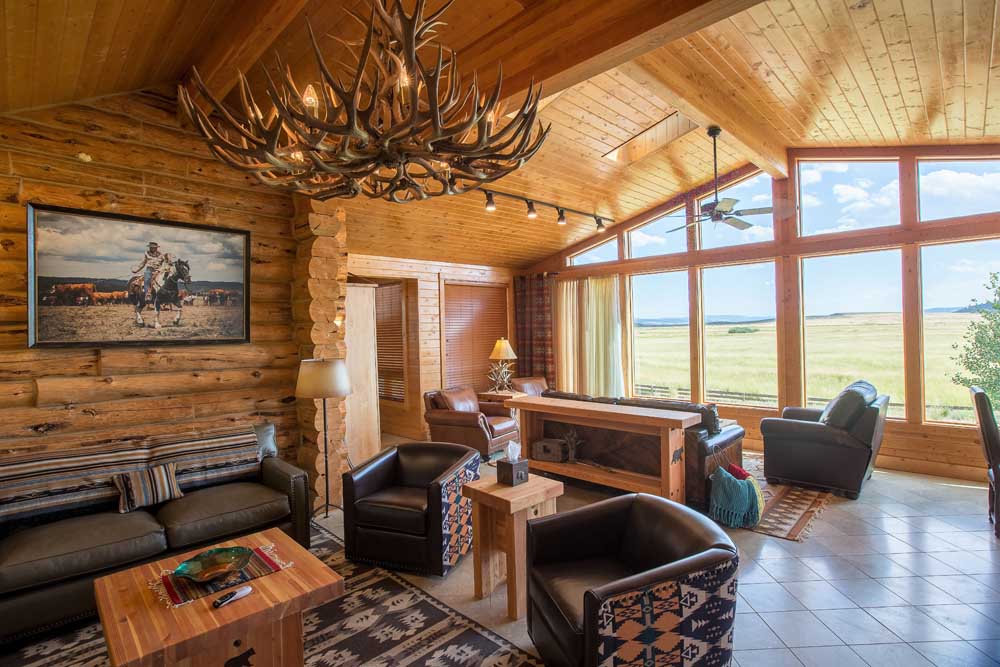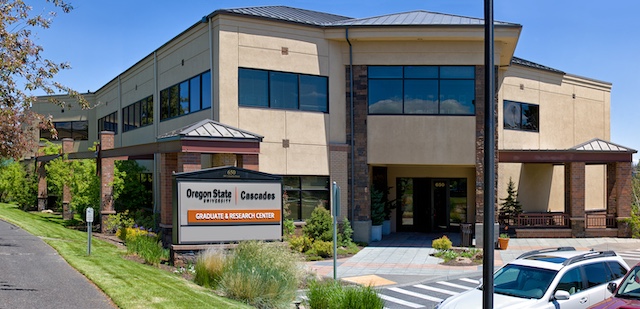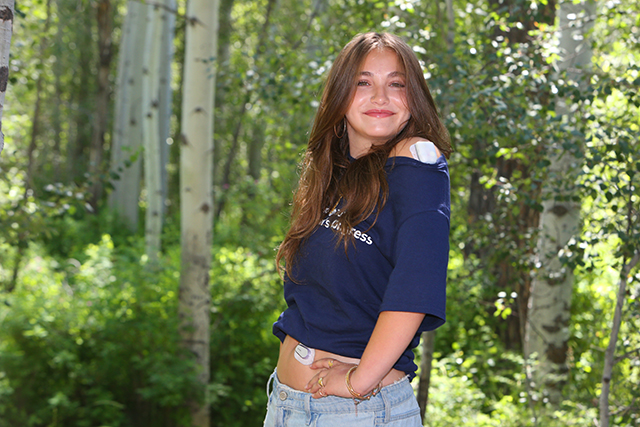Silvies Valley resort builds tourism in Harney and Grant counties
Published 5:27 am Thursday, August 17, 2017

- ABOVE: The picture window in a Silvies Valley Ranch guest suite frames a grassland that attracts small herds of elk at dawn and twilight. Priced at about $450 a night, it has a full kitchen and dining area, a master bedroom, a stone fireplace and a private outdoor hot tub. BELOW: A pronghorn antelope races through a sage-and-juniper prairie on the ranch. The fastest land animal in North America, which can run nearly 55 miles per hour, is not a true antelope; it is distantly related to the giraffe.(Barb Gonzalez/for The Bulletin)
SENECA —
By my second full day at the 140,000-acre Silvies Valley Ranch, I had played a round of golf on a unique, reversible 36-hole course. I had watched fleet of pronghorn antelope and powerful elk as they fled the growl of the hardy off-road “Razor” in which I rode. I could have cast a line for rare native red-band trout in a stream that meandered through a onetime sagebrush wasteland, now restored to aspen woodland.
Trending
I had enjoyed luxurious lodging in a spacious suite with custom fittings and a view across ponds and grasslands. I had enjoyed fine dining on chevon osso buco and beef tenderloin, prepared by a gourmet chef in a modern log lodge.
And in a fit of what perhaps was madness, I had emptied a deadly six-shooter into a zombie vampire clown on the shooting range: three shots to the body, three between the eyes.
All that was left to do was to head out with Sasha to herd goats.
Sasha is a Great Pyrenees, a large dog bred as a guardian of livestock. She takes her job seriously. As one of three white “Pyrs” (the French call them “moving snowdrifts”) on the ranch, along with several Australian cattle dogs, Sasha is charged with protecting a herd of about 1,700 crossbred Kalahari Reds from hungry predators, especially coyotes.
These South African goats are bred for their meat. That’s a foreign concept to many Americans, who unlike most of the rest of the world were not raised on this tender and tasty food (known to the French as chevon), and don’t incorporate it into their diets.
Silvies Ranch owner Dr. Scott Campbell hopes to alter that dietary habit, even as he showcases environmental renewal and provides jobs for dozens of Oregonians from Burns to John Day.
Trending
His formula: an intimate resort that contrasts rugged with sublime, superimposing a modern destination for golfers (and, soon, spa devotees) upon a rustic landscape that has supported hunters, homesteaders and livestock ranchers since the late 19th century.
Even today, it remains a working ranch, with 5,000 head of cattle along with its goats.
Saving the valley
A fourth-generation Oregonian, Campbell is a veterinarian by trade. He opened his Banfield Pet Hospital in Portland in 1985; by 2007, when he retired, there were 750 Banfield clinics at PetSmart stores in 43 states. That was when he and his wife, Sandy — who also grew up near Burns in Harney County — cast their eyes toward their home turf and purchased this property of more than 200 square miles.
Extending along U.S. Highway 395, which defines much of its eastern border, the ranch is more or less equidistant between Burns and John Day, a 45-minute drive in either direction. (From Bend, the driving time is about three hours via Burns, about 3½ hours via John Day.)
The valley, which sits at about 4,600 feet elevation, is drained by the southward-flowing Silvies River. This minor stream rises from springs and snowmelt in the Strawberry and Aldrich ranges, then slowly meanders through marshes and Burns-area rangeland to Malheur Lake, where it is consumed by the sump.
“It was in pretty bad shape when we bought it,” Campbell said. “It was a good investment, but I didn’t know how badly it was run down. Streams were badly eroded, to the point where creeks had cut deeply into the meadow, leaving no water for the riparian environment. An early irrigation system had been destroyed. The land was invaded by rabbit brush and sagebrush and was going back to the desert.”
Campbell and his team, including sons Tygh and Rand, rebuilt hundreds of miles of fences, created new backcountry roads and recovered 17 miles of periodic streams in a process that continues today. About 350 artificial beaver dams have helped to raise the water table, he said, creating habitat for native red-band trout as well as crayfish and freshwater mussels. Aspen meadows are reemerging along Camp, Jump and other creeks that feed the Silvies River.
Original marshland has been preserved in the Doe Springs Nature Preserve and other integral sanctuaries. Ancient Paiute caves have been identified as archaeological sites. Four thousand bird houses have been mounted on trees and posts, replacing habitat that was destroyed during earlier logging and removal of natural snags. At last count, said Campbell, the valley is home to 154 avian species: bluebirds and other songbirds, flickers and woodpeckers, magpies and a wealth of raptors, as well as three species of nocturnal bats.
The most visible birdhouses are those along the fairways of The Links. This unique, “reversible” golf course, designed by Dan Hixson, is a 36-hole championship layout that includes nine fairways played in opposite directions on alternate days. Bulletin golf writer Grant Lucas elaborated on those 600 acres, and talked about new holes now under construction, in a feature piece that ran on July 25.
The clubhouse is known as Chief Egan’s Hideout. The golf shop and cafe-bar, designed to offer light meals, is highlighted by a spacious, eastward-looking deck over the short, par-3 Chief Egan practice course.
The Retreat
The Retreat & Links, as the visitor side of the operation is labeled, is on the north end of the property, just off Highway 395 and about 5 miles south of the village of Seneca. New arrivals check in at the Gate House, where they are given a key card to their room — there are presently a mere 48 beds in 34 units — and assigned a private golf cart for the duration of their stay. This assures that dust will be kept to a minimum on the miles of dirt roads that wind through the property.
Visitors are quickly introduced to the resort’s Experience Center, where equipment is available for golfing, fishing, bicycling, kayaking and other sports. The Silvies Store and Gallery enhances shopping options with clothing and locally produced art.
Nearby is the future Silvies Spa, now under construction and scheduled to open next year. In addition to 15 treatment rooms, the spa will have a lap pool for swimmers, a full fitness center and a rock-climbing wall.
The heart of The Retreat is an impressive log lodge and conference center. This is home to an extended bar, a billiards room and a spacious dining room, where up to two dozen guests can be seated at a single royal table for family-style cuisine. Executive chef Lynette “LBee” Bushey prides herself on dishes like chevon stroganoff with crimini mushrooms, accompanied by hors d’oeuvres, salads and house-made desserts. Outside, a pond-side fire pit is a perfect place for after-dinner cocktails and, perhaps, s’mores.
Our elegant guest suite was the size of a modest urban apartment, with a large picture window opening to a grassland that attracts small herds of elk at twilight. It had a full kitchen and dining area, secondary seating beside a stone fireplace, a master bedroom with a full bath, a private outdoor hot tub, satellite television and full Wi-Fi access. Most units are priced at $300 to $450 a night, with minimum stays. Lodging tax and resort fee apply.
All of Silvies’ guest rooms and public spaces carry artistic adornment by Tygh Campbell, an accomplished metalsmith who also manages the ranch’s haymaking operation. Tygh has designed scores of creative fixtures — most notably an intriguing ceiling sculpture, composed of dozens of suspended, antique golf irons, that hangs in Chief Egan’s hideout. His younger brother, Rand, is in law school at Willamette University in Salem.
Razor’s edge
The Razor provided the highlight of my ranch visit with photographer Barb Gonzalez. As tough and resilient as a jeep, the off-road Polaris RZR is built like a golf cart on steroids. It ventures into corners of the Silvies Valley that no normal vehicle would dare attempt, traveling cross-country over rocks, through creeks, up steep hills and down precipitous embankments. Pronghorn, elk and mule deer flee in its wake.
Scott Campbell himself drove our Razor. (Other guests may be escorted by staff “rangers,” some of them ex-military.) He thrilled us as he accelerated across streambeds and up craggy knolls to informal viewpoints across the valley. Along the way, he described further ecological improvements and sustainable ranching practices employed by the ranch.
Campbell’s “Frontier Oregon” tourism promotion is designed to boost the regional economy. He foresees increasing employees from 93 (the current number) to between 140 and 160 by 2020. The Retreat hopes to attract Grant County and Harney County outfitters to offer such guest opportunities as horseback trail rides, John Day River rafting, and sightseeing excursions to such places as the Painted Hills and the Steens Mountain wilderness.
“It’s our plan to attract world travelers who will spend half their time off the ranch,” said Colby Marshall, another Harney County native. Artists, musicians and even shopping guides will be needed to serve them, said Marshall, the ranch’s vice president of livestock and guest services and a former chief of staff in Washington, D.C., for Congressman Greg Walden.
One activity that’s already offered is shooting. Three separate gun ranges — dubbed “Sniper,” “Rifleman” and “Pistolero” — have been constructed far from populated areas. Rangers Josh Williams and Anna Rose Clemens provide weapons and safety headgear along with individual instruction. In my case, that meant choosing a vicious clown as my target and unloading upon it as if I were defending against a zombie apocalypse.
Happy grazing
Red Angus and Hereford crosses comprise the cattle herd, which grazes on the valley’s “Mountain Wildflower” hay — a mix of more than 20 species of grasses, six of clover and 60 different wildflowers.
It’s serendipitous that the cattle don’t compete for feed with the goats, with whom they can graze side by side. Goats, as it turns out, leave the blades and shoots to the cows. Instead, they dine on the leaves of woody shrubs, including juniper, chokecherry, wild rose, bitter brush and currant. There’s no threat of overgrazing.
Cattle may also be led into adjacent areas of the Silvies Valley. Much of the ranch acreage is administered by the National Forest Service or the Bureau of Land Management, both of which allow open-range grazing.
The goats, however, remain in the valley, where they are watched by a trio of Peruvian goatherds as well as Sasha and the other dogs. I spoke to one of the South Americans, a middle-aged man named Jésus. He cares for the animals day and night, he said, earning money that he sends home to his family in the foothills of the Andes Mountains.
The goat-ranching operation is run by Sandy Campbell, Scott’s wife and a registered nurse. She has pet names for hundreds of breeding does and a handful of bucks who service the females. Her goal, she said, is to grow the herd to 1,500 does and 3,000 kids.
But the enclosure in which the goats grazed was as temporary as a pen could be, she warned, despite tiers of barbed wire. “If it won’t hold water, it won’t hold goats,” she laughed.
As if in response, the gentle bleating creatures began streaming through the wire, giving their coarse hair a good scratch as they did so. It remained for Jésus, Sasha and the rest of the herders to keep them in check.
Paiute heritage
The Silvies Valley was traditionally Northern Paiute land. Hudson’s Bay Company fur trappers, led by Peter Skene Ogden, breached its boundaries in 1822 in search of beaver, which they found in prolific numbers. The team included Antonine Sylvaille, whose name later was transliterated as “Silvies.” According to the erudite Campbell, the British crown extended orders to trap out the beaver, thus devaluing the land and discouraging U.S. settlement. Hunting parties took about 200,000 beavers from the valley, he said; two centuries later, he estimated there may be 200 beavers in the Silvies Valley.
American settlers were not discouraged, of course, but Oregon Trail travelers of the mid-19th century didn’t stop in the high desert. They preferred the lusher climes of the Willamette Valley. The marshes returned to the Paiute as a part of the Malheur Indian Reservation, which extended east as far as Juntura. That era ended with the Bannock War of 1878, after Paiute Chief Egan was killed on Battle Mountain by the U.S. Cavalry and its allies, the Umatilla. By 1883, the Silvies Valley was being homesteaded. As many as 70 ranches were established. A man named John Craddock had 160 acres where the Silvies Ranch visitor complex now stands. Roland Hankins had his homestead nearer the modern golf course. Myles McVeigh was just over the hill. Each of their names now are associated with The Links.
Two cabins remain standing. In the 1890s, John Hopper raised eight children in a one-room cabin with a loft near Camp Creek. It now is shrouded by tall grass and nettles. More accessible is the 1910 log cabin of rye farmer Charlie Owens, who lived a bachelor life.
Over time, farmers came and went. San Diego developer Harry Pon attempted a safari park with buffalo, yaks and zebras in the 1960s. That failed. Other owners focused on upland timber harvest — at least three times in the two decades preceding Campbell’s purchase in 2007.
Now the Silvies Valley has entered a new phase in its varied evolution, one that is making it into something new even as it honors, restores and preserves the old. It’s an exciting time here in the desert.
— John Gottberg Anderson can be reached at janderson@bendbulletin.com.
If you go
INFORMATION
Travel Oregon. 250 Church St. SE, Salem; traveloregon.com, 800-547-7842.
LODGING AND DINING
Silvies Valley Ranch: The Retreat & Links. 40000 E. Cowboy Lane, Seneca; silviessimplyamazing.com, 541-573-5150, 800-745-8437.








